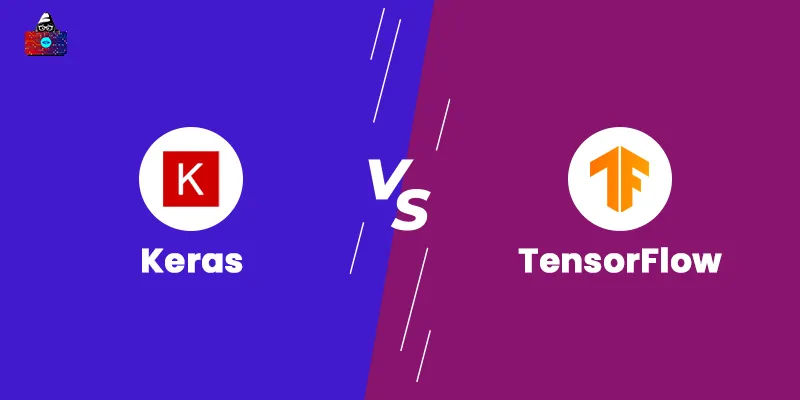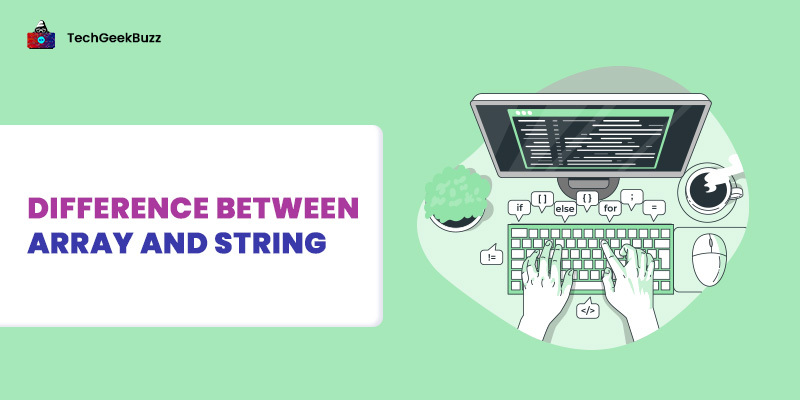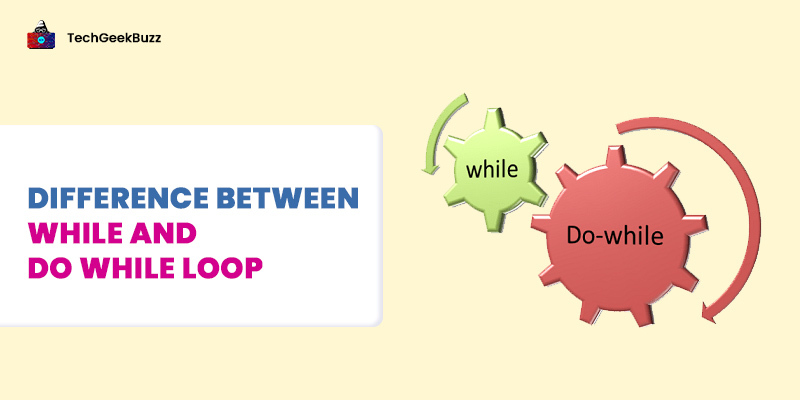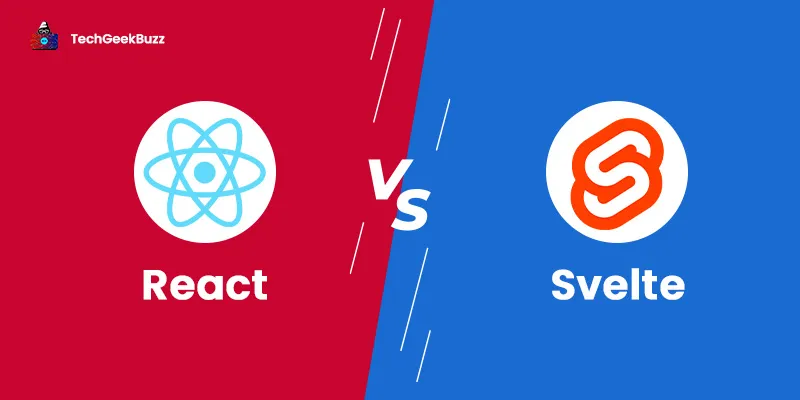Many people use the terms artificial intelligence, machine learning, and deep learning interchangeably. However, for them, it is important to know that artificial intelligence is a superset of machine learning and machine learning is the superset of deep learning. All of them have gained immense popularity due to their ability to provide innovative solutions for various real-world problems.
Developing machine learning or deep learning models is quite a challenging task. However, there are certain libraries that make it easier to develop ML and DL models by providing ready-made code for optimizing various tasks. Keras and TensorFlow are two popular libraries for building neural networks and machine learning models, respectively.
Keras is a Python-based library used for building neural networks and has a simple and intuitive interface. On the other hand, TensorFlow is an open-source library for performing a range of machine learning tasks.
Through this article, you will get to know the key differences between Keras and TensorFlow. We shall also introduce you to Keras and TensorFlow, along with their history, features, applications, advantages, and disadvantages.
So, let us get started!
What is Keras?
Keras is an open-source, high-level neural network library written in Python, and it is capable of running on top of TensorFlow, CTNK, or Theano. Theano is a Python library for manipulating and evaluating mathematical expressions, whereas TensorFlow is an open-source platform for machine learning and artificial intelligence. CTNK is known as Microsoft Cognitive Toolkit, which is a deep learning framework by Microsoft.
Along with standard neural networks, Keras also supports the implementation of Convolutional Networks and Recurrent Networks individually as well as collectively. This library primarily focuses on being modular, user-friendly, and extensible, and it allows fast experimentation with deep neural networks.
Keras is not capable of handling low-level operations, such as convolutions, tensor products, etc. As a result, it depends on a specialized tensor library, serving as the ‘backend engine’ of Keras. There are two backend implementations of Keras, the TensorFlow backend and the Theano backend.
History of Keras
François Chollet, a Google engineer, is the primary author and maintainer of Keras. He initially released Keras in March 2015 as Keras 2.0.5. He developed it as part of the project ONEIROS (Open-ended Neuro-Electronic Intelligent Robot Operating System). This library is available under the MIT license, and the latest version of Keras is Keras 2.7.0.
Features of Keras
The following are the salient features of Keras:
- Keras has a high-level, consistent, and extensible API.
- It is a user-friendly library that runs smoothly on CPU and GPU.
- It enables users to productize deep learning models on the web, Java Virtual Machine (JVM), and iOS and Android devices.
- This library consists of implementations of commonly used neural-network building blocks, such as layers, functions, activations, and optimizers.
- It also consists of tools that make working with images and text data more effortless, which, in turn, simplifies writing the deep neural network code.
- Keras supports multiple platforms, Ubuntu 16.04 or later, Windows 7 or later, macOS 10.12. 6 (Sierra) or later.
Applications of Keras
The following are some typical applications of Keras:
- We can develop neural network models and productize them on mobile devices, JVM, and the web.
- It lets us use distributed training of deep learning models on graphics processing units (GPU) and tensor processing units (TPU).
Advantages and Disadvantages of Keras
Let us discuss some significant upsides and downsides of Keras.
Advantages
- Since Keras has a user-friendly API, it becomes easy for beginners to build deep learning models using Keras. With just a few lines of code, we can create deep learning models with Keras.
- Keras has detailed and high-quality documentation that helps to become familiar with all the features of Keras effectively. In addition, the documentation contains examples to help you understand better.
- It has excellent community support.
-
Keras provides various deep learning models with pre-trained weights that we can use for feature extraction or making predictions. Some of those models are as follows:
- Xception
- VGG16
- VGG19
- ResNet, ResNetV2
- InceptionV3
- InceptionResNetV2
- MobileNet
- MobileNetV2
- DenseNet
- NASNet
Disadvantages
- Keras cannot handle low-level computations, and hence, it runs on top of TensorFlow and Theano. In addition, it gives low-level backend errors when we use Keras to perform operations for which it is not designed.
- Error details provided by Keras are not sufficient to identify the root cause.
- The data processing tools provided by Keras are not ideal for building models using machine learning algorithms, like principal component analysis (PCA) and clustering.
What is TensorFlow?
TensorFlow is an open-source library for building machine learning models, but it primarily concentrates on the training and inferences of neural networks. Using TensorFlow, we can build, train, and run neural networks for image recognition, digit classification, word embeddings, and many other ML applications.
We can build and deploy neural networks with high-level Keras API, making it effortless for beginners to start working with machine learning. In addition, we can leverage the Distribution Strategy API for distributed training on different hardware configurations without changing the model definition.
TensorFlow supports an array of robust library add-ons, including TensorFlow Probability, Tensor2Tensor, Ragged Tensors, and BERT. It lets developers create complex topologies using high-level Keras’s Functional API and Model Subclassing API.
History of TensorFlow
The Google Brain developed TensorFlow, and it is available under the Apache License 2.0. In 2011, Google developed a proprietary machine-learning system based on deep learning neural networks called DistBelief. The use of this system grew massively in research and commercial applications.
Later, Google assigned multiple computer scientists to improve the code of DistBelief to make it a more powerful and application-grade library, which later became TensorFlow. The Google Brain Team developed version 1.0.0 of TensorFlow in February 2017.
In the same year, in December, developers from RedHat, Google, Cisco, CaiCloud, and CoreOS developed Kubeflow, which enabled the deployment of TensorFlow on Kubernetes. In March 2018, the Google Brain Team introduced TensorFlow.js version 1.0 for machine learning with JavaScript. TensorFlow 2.0 became officially available in September 2019.
Features of TensorFlow
The following are the salient features of TensorFlow:
-
AutoDifferentiation
AutoDifferentiation is a method that automatically calculates the gradient vector of a model with respect to each of its parameters. TensorFlow supports AutoDifferentiation that can automatically compute the gradient for a model’s parameters. Calculating the gradient of a model is useful in algorithms such as back proportion, which requires gradients to optimize performance.
-
Eager Execution
The ‘Eager Execution’ mode in TensorFlow enables the evaluation of the operations immediately, instead of adding them to a computational graph which is executed later.
-
Loss Functions
TensorFlow includes loss functions, also called cost functions, such as binary cross-entropy (BCE) and mean squared error (MSE) to train and assess ML models. These functions are responsible for computing the difference between the actual output and the expected output of a model.
-
Metrics
Metrics in TensorFlow are used to assess the performance of ML models. Some typical examples of metrics include Precision, Recall, and Intersection-Over-Union (IOU).
-
Optimizers
TensorFlow utilizes multiple optimizers, including Stochastic Gradient Descent (SGD), ADAM, and ADAGRAD, for training neural networks.
-
TensorFlow.nn
TensorFlow.nn enables developers to execute primitive neural network operations on ML models. Some typical operations include variations of convolutions, like Atrous and depthwise, activation functions, like RELU, GELU, and Softmax, and other Tensor operations, like max-pooling, bias-add, etc.
Applications of TensorFlow
Here are some popular applications of TensorFlow:
- Image and face recognition
- Virtual assistants
- Self-driving cars
- Recommendation systems
- Healthcare-related applications, such as cancer or tumor detection
Advantages and Disadvantages of TensorFlow
Here are the key advantages and disadvantages of TensorFlow:
Advantages
- TensorFlow is an open-source platform available to all users and is compatible with Linux, Windows, and macOS systems.
- It is compatible with popular programming languages, including Python, C++, JavaScript, Ruby, Swift, and C#.
- TensorFlow offers better computational graph visualizations.
- As it is developed by Google, it provides frequent updates and releases with new features.
- It provides quick and easy prototyping.
- It has excellent community support.
- TensorFlow has a tensor processing unit (TPU), which performs faster computations than CPU and GPU.
Disadvantages
- TensorFlow only provides NVIDIA support for GPU and Python support for GPU programming.
- It offers comparatively fewer features to Windows users than Linux users.
- TensorFlow lags in providing symbolic loops for indefinite sequences.
- It has a steep learning curve.
- It also lags behind in terms of speed and usage.
Keras vs TensorFlow: Head-to-Head Comparison
The following table highlights the key differences between Keras and TensorFlow:
| Parameters | Keras | TensorFlow |
| Definition | Keras is an open-source neural network library that runs on top of TensorFlow, CTNK, and Theano. | TensorFlow is an open-source library for developing machine learning models and focuses on the training and inferences of neural networks. |
| Datasets | This library is ideal for small datasets. | This platform is ideal for large datasets. |
| APIs | Keras is a high-level API that runs on top of TensorFlow, CNTK, and Theano. | TensorFlow provides both high-level and low-level APIs. |
| Models | It is ideal to use for creating low-performance models. | It is an ideal choice for developing high-performance models. |
| Written in | Keras is written in the Python language. | TensorFlow is written in Python, CUDA, and C++ languages. |
| Architecture | It has a simple architecture and is a user-friendly library for beginners. | It has a complex architecture and is not ideal for beginners. |
| Developer | Francois Chollet, a Google engineer, developed Keras. | The Google Brain Team developed TensorFlow. |
| Debugging | Simple networks in Keras require very little need for debugging . | It is extremely tricky to perform debugging in TensorFlow. |
| Users | Some popular companies that use Keras are Amazon, Google, NVIDIA, Uber, Netflix, and Microsoft. | Some reputed companies that use TensorFlow are PayPal, Airbnb, LinkedIn, Google, Qualcomm, and AMD. |
Keras vs TensorFlow - Which One to Choose?
There are a lot of differences between Keras and TensorFlow. The primary difference is that TensorFlow focuses on machine learning, whereas Keras only focuses on neural networks. Since Keras is a Python-based library and has a simple and user-friendly API, Keras is ideal for beginners. But it cannot handle low-level computations.
On the other hand, TensorFlow provides both low-level and high-level APIs and is ideal for developing high-performance machine learning models. But it is important to note that Keras has become part of TensorFlow since the release of TensorFlow 2.0; Keras is a high-level API of TensorFlow 2.0. The integration of Keras with TensorFlow enables developers to benefit from Keras’s user-friendliness and access all low-level APIs of TensorFlow.
Conclusion
Keras and TensorFlow are widely used libraries in the machine learning and deep learning domains. Each of these libraries has its own features, advantages, and disadvantages. TensorFlow is a comprehensive library that can help to create machine learning models for handwriting recognition, enterprise-grade applications, and much more. On the flipside, Keras primarily focuses on neural network models and intends to facilitate fast experimentation.
Hopefully, this article helped to understand all the major differences between Keras and TensorFlow. Also, it is important for you to remember that Keras is now an official high-level API of TensorFlow 2.0.
People are also reading:




